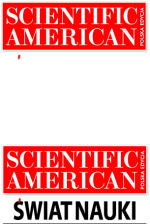 2006
2006
 2008
2008
 2010
2010
 2012
2012
 2014
2014



 |
Ponds among heaps and pits
‘Anthropogenic aquatic environment’
Tadeusz Molenda – author of photographs and project manager
Sundew overgrowing an anthropogenic bog |

|
Description popularizing the research project
Two, excluding each other, phenomena of creation and destruction, have always accompanied development of civilisations. Most often, paradoxically, they occur simultaneously. It is clearly visible in the areas where deposits of precious ores and fossil fuels have been discovered and where the exploitation has been conducted for a shorter or longer time. Extraction and processing raw materials usually requires tremendous efforts. Equally tremendous are the changes occurring in the natural environment and landscape. Within a few decades, the man can create artificial hills, canyons, rocky outcrops or reservoirs. At the same time, in the process, fragments of forests, plains, hills and even river valleys are destroyed or altered.
The landscape does not protest. The natural environment accepts the new situation humbly and, according to its own rules, fills the new elements of the landscape with new life. Shortly, sometimes after just a few vegetative seasons they start teeming with life. The man-made hills covered with lush green and reservoirs with reed beds, ducks, swans and coots, look irresistibly charming. Anthropogenic pond and lakes are very quickly accepted and appreciated in the new scenery. After a few decades, their biodiversity does not differ much from the natural ecosystems. Thanks to their beauty, they become popular destination for doing sports. Others, inhabited by an unusual variety of fauna and flora, are protected as ecological sites or landscape-nature protected complexes. Some of them may even one day become nature reserves.
Then is it creation or destruction? When the new ecosystems establish in the new landscape, there is no point in coming back to the dilemma. Instead of that, it is good to enjoy the new beauty and admire nature’s unbreakable strength and lust for life.
Abstract
Human interference in the natural environment leads to considerable changes in its particular components. Its effect is especially noticeable in mining areas. Exploitation and processing natural resources contributes to essential changes both in surface features and water relations of such areas. These transformations of water environment are multidirectional and connected not only with the changes of water quantity but with the changes of water quality as well. The changes of water relations may be the consequence of both deliberate human activities and unintentional ones as an indirect result of mineral resources exploitation. A visible manifestation of mining activity is the creation of new, not existing before, anthropogenic environments. The pictures below show both anthropogenic water objects and plants occurring there
Patronat honorowy
Leszek Jodliński
Dyrektor Muzeum Śląskiego w Katowicach
Zygmunt Łukaszczyk
Wojewoda Śląski
Jan Malicki
Biblioteka Śląska
Piotr Uszok
Prezydent Katowic
Adam Matusiewicz
Marszałek Województwa Śląskiego






 Ice hedgehog
Ice hedgehog








